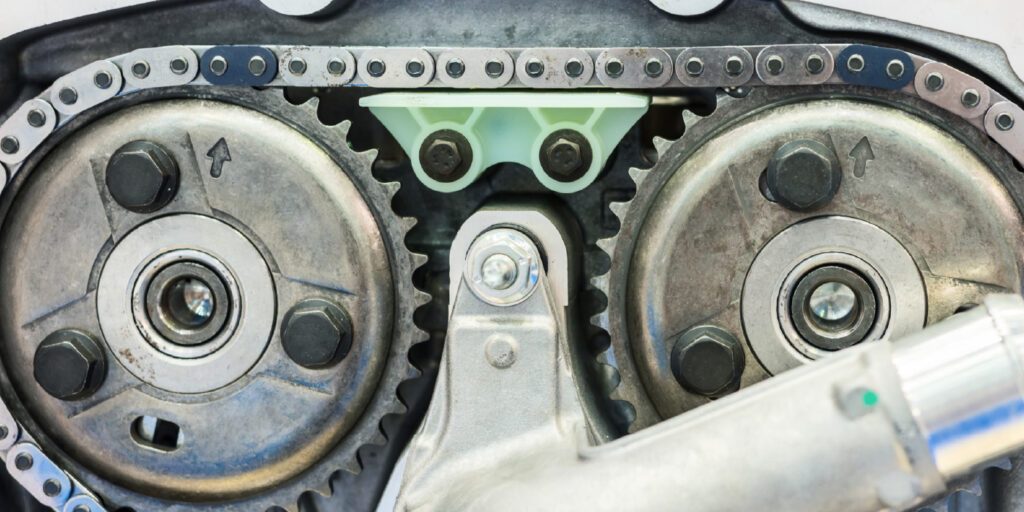Quality is something everybody talks about when it comes to selling brake pads, but what does it really mean? Same look and fit as the original pads? No installation problems? No noise complaints? Same or better braking performance, feel and pad life as the OEM pads?
Original equipment brake pads are the standard by which most aftermarket brake pads are compared and judged. When an OEM manufacturer chooses a particular brake configuration for a vehicle and selects a certain friction material, the selection is based on a number of criteria. First and foremost, all new vehicles have to meet Federal Motor Vehicle Safety Standards (FMVSS). The FMVSS standards assure new vehicles can stop within a certain distance deemed necessary for safe driving. FMVSS 135 is the current standard and applies to 2000 and newer cars, and 2002 and up light trucks. Compared to the previous FMVSS 105 standard, FMVSS 135 requires roughly a 25 percent reduction in pedal effort for the same stopping distance.
FMVSS 135 says vehicles less than 10,000 lbs. (except motorcycles) must be capable of stopping within 230 feet from 62 mph with cold brakes (under 212 degrees) and with no more pedal effort than 368 ft. lbs. The standard also specifies a required stopping distance of 551 feet should the power brakes fail (no power assist), or if one of the two hydraulic circuits fail, and a stopping distance of no more than 279 feet if the anti-lock brake (ABS) system fails.
There is also a hot performance-stopping requirement for fade resistance. With the brakes hot, the maximum stopping distance for the second of two back-to-back panic stops cannot exceed 292 ft. with the same pedal effort as before.
The parking brakes are also covered by FMVSS 135. The rules specify conditions under which the parking brake must be able to hold the vehicle on both an uphill and downhill incline.
In addition to meeting FMVSS requirements, the OEM engineers who test and develop brake linings also have to take into account customer expectations for noise, vibration and harshness (NVH), as well as pedal feel and pad life. Luxury vehicle owners obviously have higher expectations than economy car owners, but both want safe brakes that will stop on a dime with minimal pedal effort and noise.
To make sure the brakes meet their engineering criteria as well as customer NVH and performance expectations, the OEMs do extensive validation testing before a vehicle ever hits the showroom floor. Friction materials are subjected to all kinds of laboratory scrutiny, including hot and cold environmental testing, humidity testing and salt spray. Dyno simulations measure hot and cold friction coefficients, fade resistance, pedal effort, noise frequencies, pad and rotor wear.
The data is collected and analyzed, and if changes are needed the friction material and design of the pads are tweaked to “optimize” them to the vehicle on which they will be installed. This is followed with extensive vehicle testing. Pads are installed on test cars and driven for tens of thousands of miles to make sure they actually perform as predicted. Only after the linings have passed a thorough evaluation, do the engineers sign off and approve the pads for production. That’s the gold standard aftermarket brake pads have to live up to in order to truly “equal or exceed” OEM quality.
The trouble is, not all aftermarket brake suppliers put their linings through such rigorous testing. Some do only superficial testing to make sure their pads look and fit like the OEM pads (same dimensions, chamfers, slots and shims). But they do minimal testing to evaluate how their friction materials actually compare to the OEM linings. They may only do a simple chase test to measure hot and cold friction coefficients in the laboratory, but no environmental testing or advanced dyno testing to verify all the performance characteristics of their brakes. Some aftermarket suppliers may test their linings on a few vehicles, but not on every vehicle application they cover because it’s too expensive and time-consuming. Others may not do any vehicle track testing at all, and simply box and ship their products while hoping for the best. Consequently, their “OEM quality” pads may be anything but.
The only aftermarket brake supplies who should claim “OEM quality” are those who have similar test capabilities to the OEMs, and actually do the same kind of extensive laboratory and track testing to verify their products. This includes verifying stopping distance, fade performance, brake system response, brake balance, noise and vibration, component interactions, brake life and rotor life both in the lab and on the road.
When selling replacement brake linings, therefore, your job is to recommend products that are truly as good as or better than the OEM pads they replace. Customers want the same performance, feel and pad life — and no surprises. Ask your brake suppliers what kind of testing they do on their products, what kind of warranty they offer, where their products are made and what kind of reputation they have with your professional installer customers. Asking the right questions can provide some eye-opening answers.











